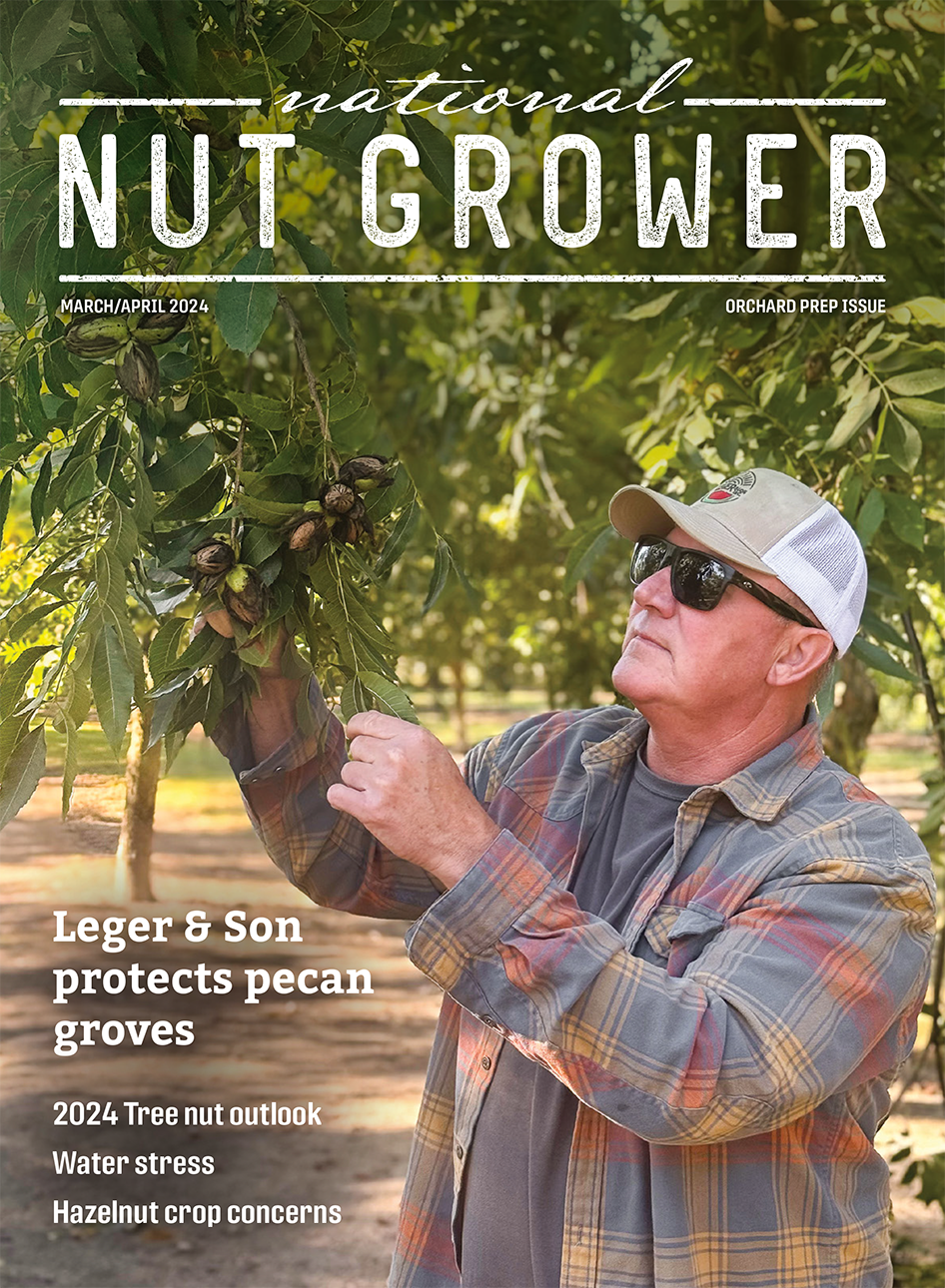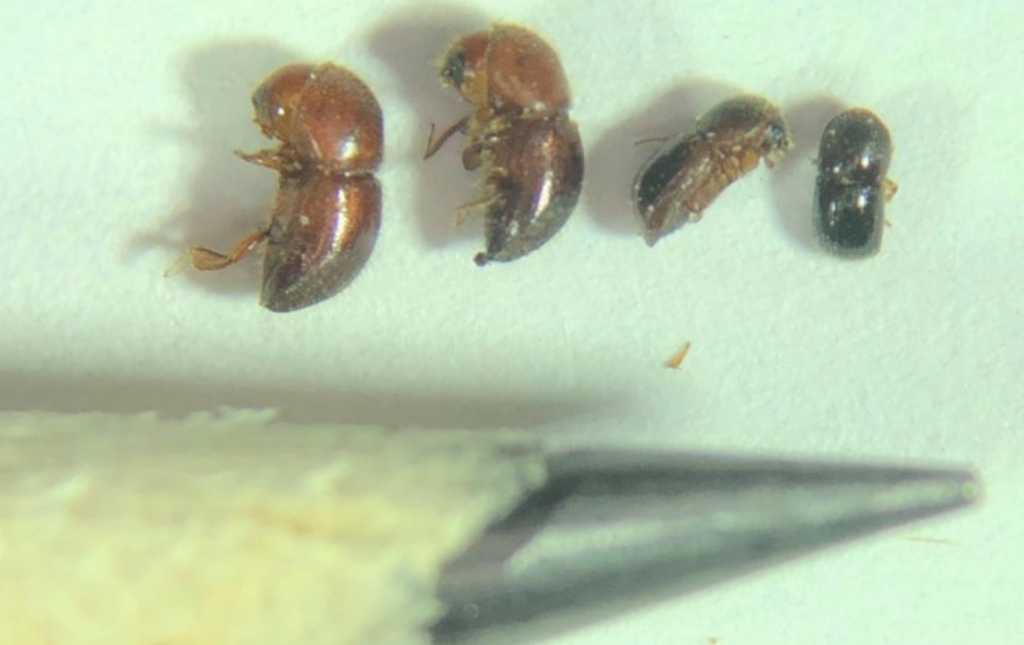
Mar 6, 2022Update for ambrosia beetle in Georgia pecans
I’ve talked to growers from Fort Valley, Hancock County to South Georgia who have identified ambrosia beetles being very active this week. Once we have consistent warm days, the adults start flying. If you have had problems with this pest before, or if you have newly planted trees, it is likely a good idea to begin spraying the trunks of young (1-3 years old) trees with a pyrethroid like Bifenthrin. Due to the number of beetles captured inside trunk protectors, make sure to remove the protectors before spraying or spray down into the tube, being sure to coat the trunk as best you can.
Control
The last two years, former entomologist Dr. Angel Acebes organized research on ambrosia beetle control. Initially, we were looking at painting the trunks of trees compared to spraying a pyrethroid. I managed one of the locations in 2020, and that year we found the best control was both 1) spraying pyrethroid right after painting the trunk with white latex paint and/or 2) spraying pyrethroid onto the trunk once a week. This experiment was conducted again in 2021, where spraying pyrethroid was better than everything else.
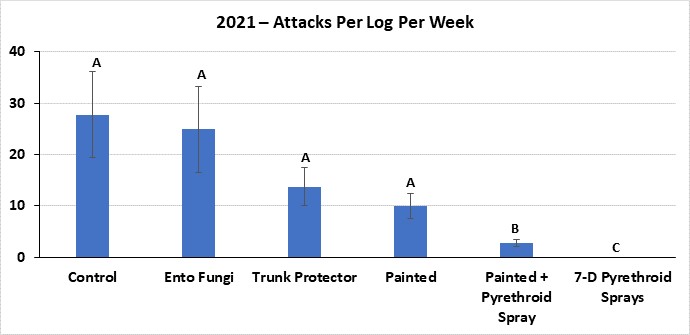
Considerations and plan for management
- Pay close attention to newly planted trees through three years of age.
- Trees closest to the wooded areas (maybe three rows in).
- Set ambrosia beetle traps. Even though beetles are now flying does not mean your orchard will have high numbers. It also allows you to concentrate on the area of the orchard beetles are active.
- Scout for small holes or ‘toothpicks’/sawdust from the logs. There are many species of ambrosia beetles and other small beetles, but this species leaves behind the sawdust. If you spray following beetle attacks on your trees, you can save your trees. Tree death is associated with how many beetles attack the tree versus the tree size.
- Hand sprayer and/or shotgun approach is the best method of control. Once beetle activity is confirmed, scout your trees. 1 oz. of a pyrethroid in 10 gallons of water is sufficient. Because attacks occur down in the tree guards, you must spray into the tree guards.
- Spray every 10 days to two weeks. A pyrethroid has residual for a short time. If it rains following an application, consider the insecticide no longer active.
- Monitor traps now through May (below). This species of ambrosia beetle is not very active once we reach summer.
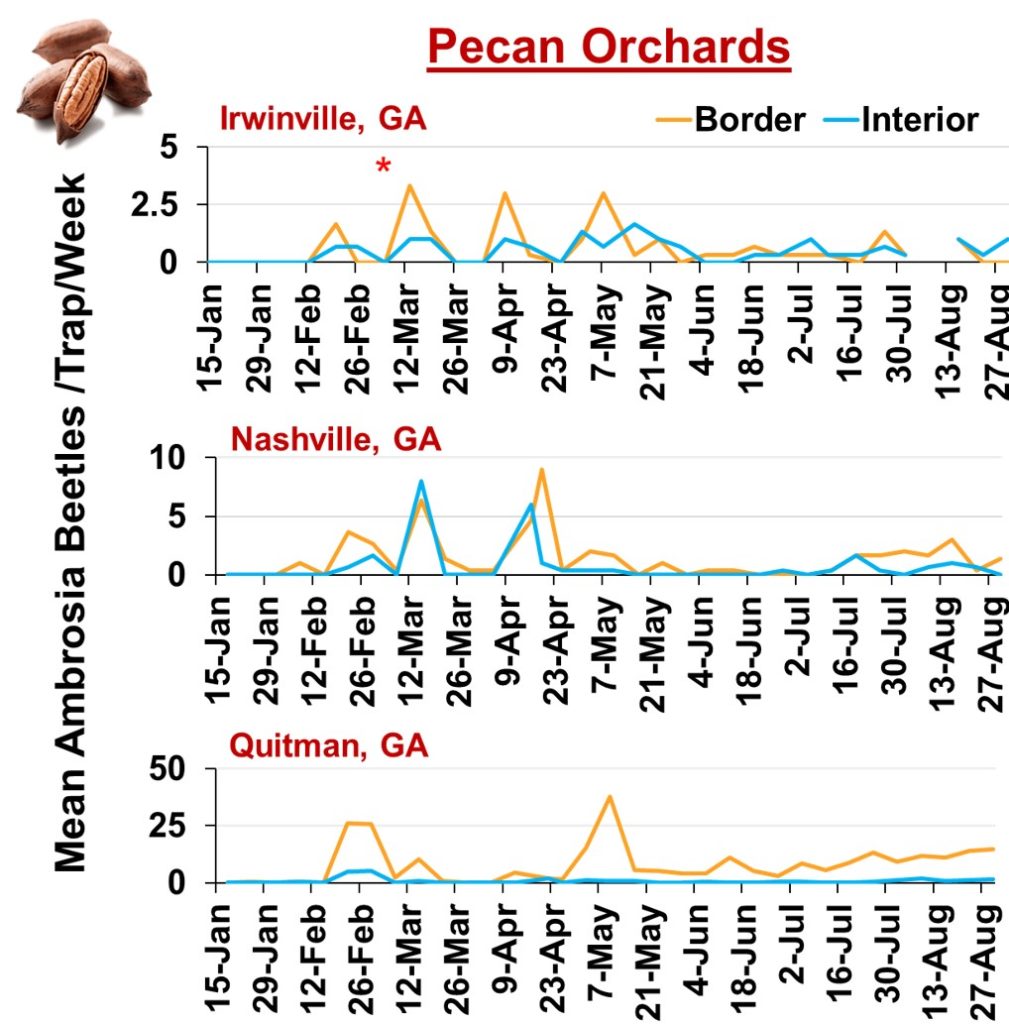
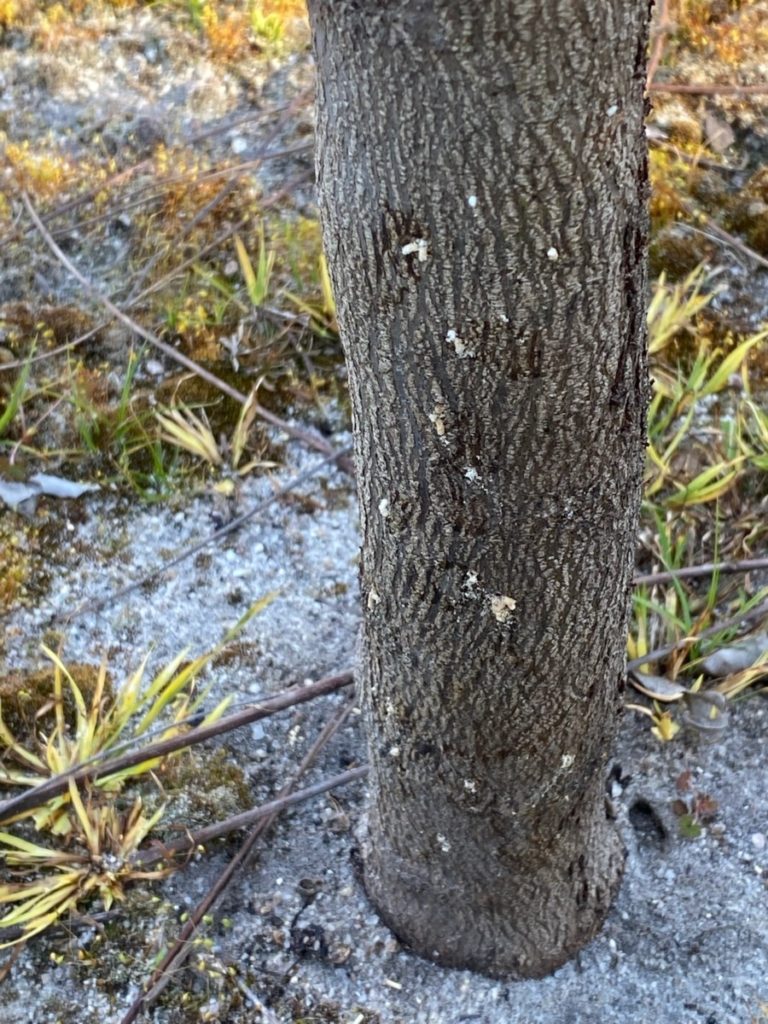
– Andrew Sawyer, University of Georgia
Above photo: Ambrosia beetles collected from young pecan trees. Photo: Angel Acebes-Doria, University of Georgia







